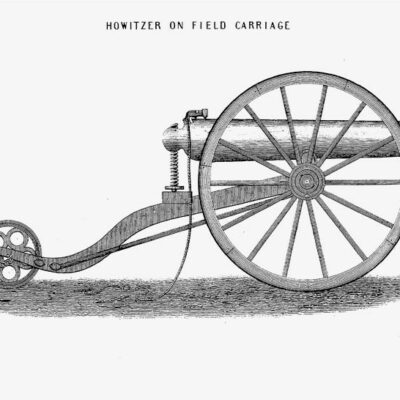
History is not just things from the past, but a road well-traveled that forms our future. I have always loved history, to see how things have evolved from the past to the present, and especially getting to know the reasoning behind the how or why things changed.
In the opinion of a Gunner’s Mate, such as myself, this is very true about our weapons. Naval artillery has evolved from field artillery pieces put on boats, to naval ordnance, to modern-day gun systems. One example occurred during the Mexican War from 1846 to 1848. The U.S. Navy conducted blockades of the major seaports in Mexico, however, most naval operations were conducted on shore with sailors serving as infantry or in rivers and shallow waters with ship launches where larger vessels could not operate. The U.S. Navy found it did not have light guns that could be used on land to support landing parties. Although some pieces were borrowed from the Army, but they proved unsatisfactory, and the need for the Navy to have its own lightboat gun was evident.
So, in 1849, a young lieutenant named John A. Dahlgren, a man who would go on to be known as the father of naval ordnance, was assigned to the Washington Navy Yard. He recognized the problem and designed a collection of smoothbore muzzle-loading howitzers. These guns could be mounted on ships, cutters and launches, and mounted on field carriages for use ashore. Thus, the Dahlgren boat howitzer was born.
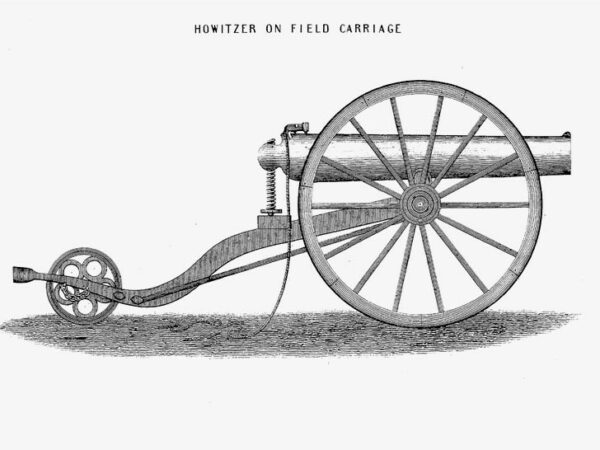
The Navy officially adopted the boat howitzer in 1850 and was manufactured in three sizes: the 12-pound light howitzer, 12-pound medium, and a 24-pounder. The guns were made of cast bronze and featured a Dahlgren-designed percussion-lock for firing. Loops underneath the gun secured it to its carriage and a screw elevator adjusted elevation at the stern of the gun.
For ship operations, a carriage was developed to allow the gun to be utilized as a typical deck gun. This carriage could also be mounted in one of the ship’s launches for boat operations away from the ship, such as harbor defense and operations in shallow water where a ship could not maneuver. It could be employed against enemy small boats or even light vessels. It was capable of sustained fire through a wide variety of angles without altering the direction of the launch.

In support of landing parties, a wrought iron field gun carriage was used. It was fitted with all iron or iron-rimmed wood wheels, was simple in construction and easily assembled. The field carriage was designed to be pulled by men instead of horses. Because of this, the carriage was fitted with a wheel at the tail that could be lifted for firing by removal of a pin.
One thousand and eighty-seven 12-pounders were cast during the Civil War and served throughout the Navy. However, their use was not limited to the U.S. Navy. Boat howitzers were also used by the U.S. Revenue Cutter Service (predecessor of the Coast Guard). The Revenue Cutter Service’s ability to operate in shallow waters made the boat howitzer ideal for cutter operations.
In November 1857, the Revenue Cutter Harriet Lane set sail armed with a long 32-pound cannon, four Dahlgren 24-pound Howitzers, and a 12-pound Dahlgren Boat howitzer. On April 12, 1861, she would go on to fire the first naval shot of the Civil War, firing across the bow of steamer Nashville as she tried to enter Charleston Harbor during the siege of Fort Sumner. This episode was illustrated in a Coast Guard commissioned paining by marine artist Howard Koslow.
In another Coast Guard commissioned picture, painted by marine artist Gil Cohen, you see a boarding party from the Revenue Cutter Morris preparing to board the passenger vessel Benjamin Adams in July 1861. Depicted on the bow of Morris is a Boat howitzer on a field carriage ready for action. In 1862, the Revenue Cutter Miami held four 12-pound Boat howitzers on her decks when she carried President Abraham Lincoln and Executive staff to Hampton Roads, Virginia. Later, in the 1870s, boat howitzers were still in use on board the Revenue Cutter Salmon P. Chase.
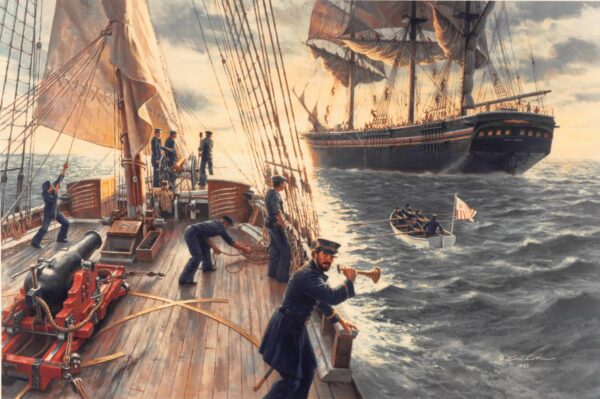
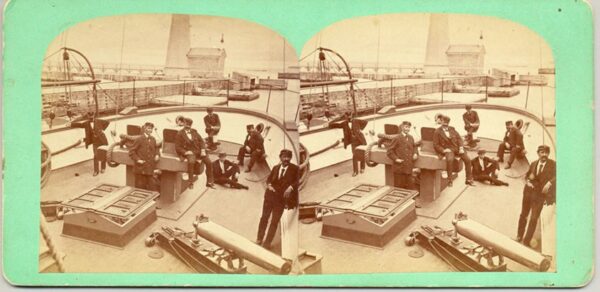
One might ask why the interest in the Navy’s Dahlgren boat howitzers? It all started in 2009, when I was stationed at TRACEN Yorktown Weapons School as the armory supervisor. Several members of our schoolhouse attended an armory conference in Milwaukie, Wisconsin, and the Pacific Area (PACAREA) Armory chief, Chief Garcia, a gunner’s mate, mentioned that he had “This darn cannon taking up space in a storeroom and was told to ‘get rid of it.’” Cannon? My mind conjured up a signal cannon or a line-throwing gun, but he assured me that it was a full-size cannon. After a moment of thought, I said “Well we are the gun school, send it to us. I’m sure we can do something with it.” With that said, we went about the conference without a second thought.
Soon after we returned from the conference, Chief Garcia sent me pictures of the gun. There, in the picture was a bronze cannon on an iron field carriage. It was a 772-pound Dahlgren boat howitzer. He then mailed me the folder they had on the gun and, as the ABC Radio News broadcaster Paul Harvey used to say, “And now, the rest of the story!”
The PACAREA boat howitzer was a 12-pounder, numbered 246 and was forged in 1863 at the Ames Manufacturing Company in Chicopee, Massachusetts. According to its file, it had a sister gun numbered 245. Research showed that after their manufacture, 245 and 246 served together on several ships, including USS Jamestown from 1863 to 1875. Gun 246 was transferred to USS Nyack for a time, but by May 1879, both guns were reunited and transferred to USS Wachusett at Mare Island Navy Yard, near San Francisco. Then, in January 1882, both guns were loaned to the Collector of Customs in Alaska, thus the connection with the Revenue Cutter Service. By March 1882, both guns were returned to the USS Wachusett. In October 1884, the guns were transferred to USS Adams in Sitka, Alaska and, within days, they were transferred again to the USS Pinta. By March 1891, both 245 and 246 were listed in the inventory of the Mare Island Navy Yard. Then, nothing; the guns disappeared from historical record.
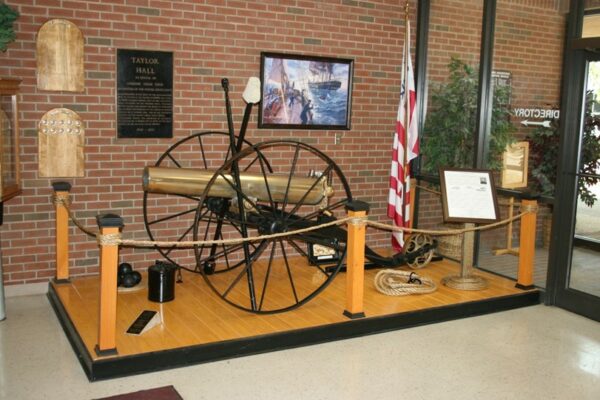
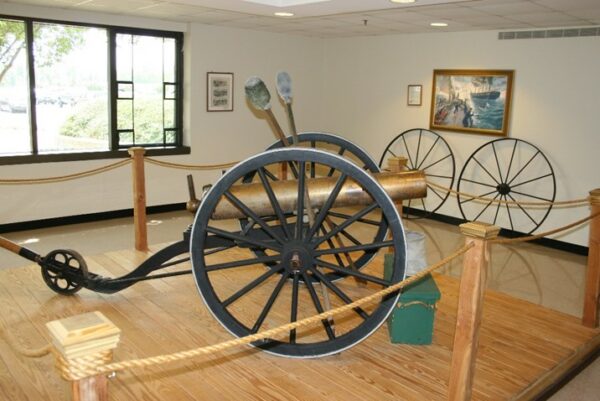
Fast forward to July 1976. Members of a historical group called the Harriet Lane Landing Party (HLLP) out of Seattle, Washington, rediscover the guns on display in Woodland Park, in Seattle. Made up of volunteer active-duty, Reserve, and Auxiliary Coast Guard men and women dedicated to the depiction of the Revenue Cutter Service of the 1860s, the group found both guns were heavily weathered and in poor condition having been on display outside for years. The boat howitzers were victims of neglect as are many monumental ordnance pieces.
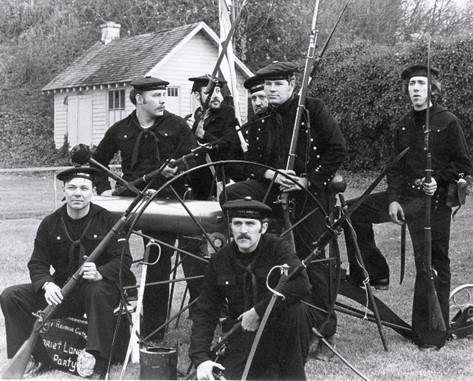
Working with Capt. David Webb (ret.) of the Coast Guard Museum of the Northwest, a request was made to the Superintendent of Parks, City of Seattle, to permanently transfer the 245 and 246 to the museum. By the latter part of 1976, both guns were being restored and refitted for use by the Museum and HLLP as historical displays and saluting batteries. Their public display and use continued until the mid-1980s when the HLLP disbanded. The guns were then cared for by the PACAREA Armory at Alameda, California. In August 1996, the PACAREA Armory was formally acknowledged as the permanent custodian of guns. There, the guns were used as ceremonial pieces for incoming ships until, once again, they ended up in storage.
July 2003, with the help of Chief Warrant Officer Allen Mordica, Gun 245 was transferred to Integrated Support Command [now Base] Portsmouth, Virginia, and the Tidewater Maritime Living History Association (TMLHA). Like the HLLP, TMLHA is a historical group of active-duty and retired Marines, Navy, and Coast Guard personnel. And, like HLLP, it is a living history organization that depicts the U.S. Revenue Cutter Service and Navy of the 1860s. Gun 245 was refurbished with a set of wooden wheels, and, as before, was used in TMLHA’s historical display and as a saluting battery. Displays and firing events, included Coast Guard Day, historical anniversaries, and events, and, even Atlantic Area Commander Vice Admiral Hull’s change of command and retirement. The 245 is currently on display in the lobby of Erroll Brown Hall at Base Portsmouth.
With all of this historic background, it seemed obvious that Gun 246 had to come to the gunnery school at TRACEN Yorktown. So, in September 2009, the 246 was officially transferred to TRACEN Yorktown Weapons School. We hoped that we could use the guns as a historical display and a saluting battery. The gun was cleaned, and a display built in the foyer of Taylor Hall at TRACEN Yorktown, where the gun could be admired once again. On June 2, 2010, we gathered on the gun deck of Taylor Hall to officially welcome 246 aboard. The event was also an opportunity to reunite guns 245 and 246.
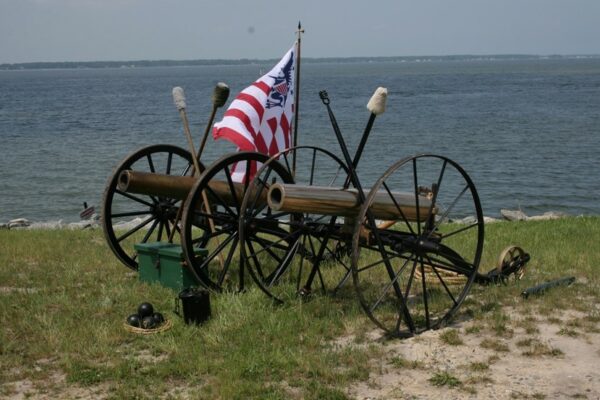
As attention began to surround these two guns, I discovered two other boat howitzers held by the Coast Guard–one at Station Lake Erie and one at the Coast Guard Academy in New London. With the help of a shipmate located near Lake Erie, I received some pictures of the gun at the station.
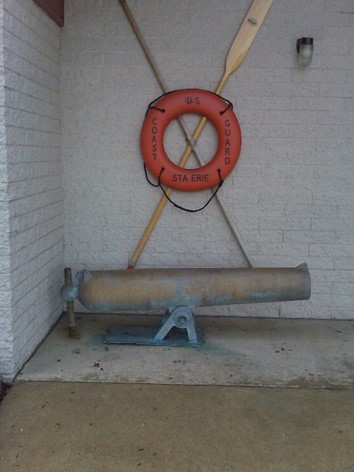
The pictures revealed that the station howitzer gun was a 24-pounder with a bigger bore. The gun has a front sight and an inscription across the gun breech of “FOR TREASURY DEPT.” Other howitzers we had seen did not have these marks and, as the Revenue Cutter Service was under the Department of the Treasury, this indicates this gun was made specifically for the Revenue Cutter Service.
Further research showed that the gun at Station Lake Erie was on loan from the Navy to the Erie Maritime Museum. I spoke with Constance Beninghove from the Museums and Collections Division at the Naval History and Heritage Command about the markings. She indicated that in 2005 the Erie Maritime Museum sent a condition report stating that their research supported the claim that the Treasury Department marking indicated that this gun was indeed cast for the Revenue Cutter Service. Further details regarding the identity of the cutter it was aboard could not be found.
I did get a chance to see the gun at the Coast Guard Academy in New London in 2016 while attending Chief Warrant Officer School. It was in good condition and had the same markings “FOR TREASURY DEPT.” I hope someone will find out what cutters the guns were assigned to.
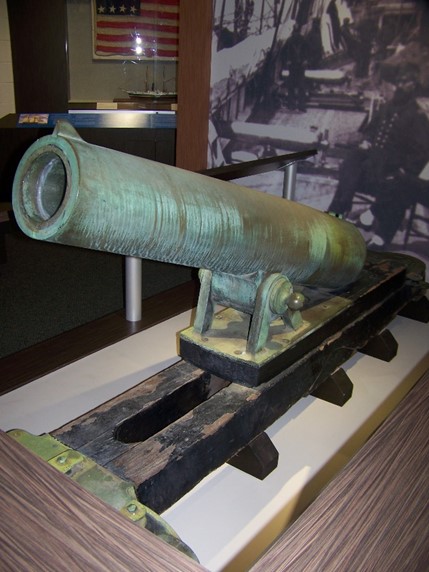
National Coast Guard Museum insider tip: The Dahlgren Howitzer pictured above, along with the history of the Reveue Cutter Service in the American Civil War, will be on display in the Defenders of our Nation wing of Deck 3 of the National Coast Guard Museum.
